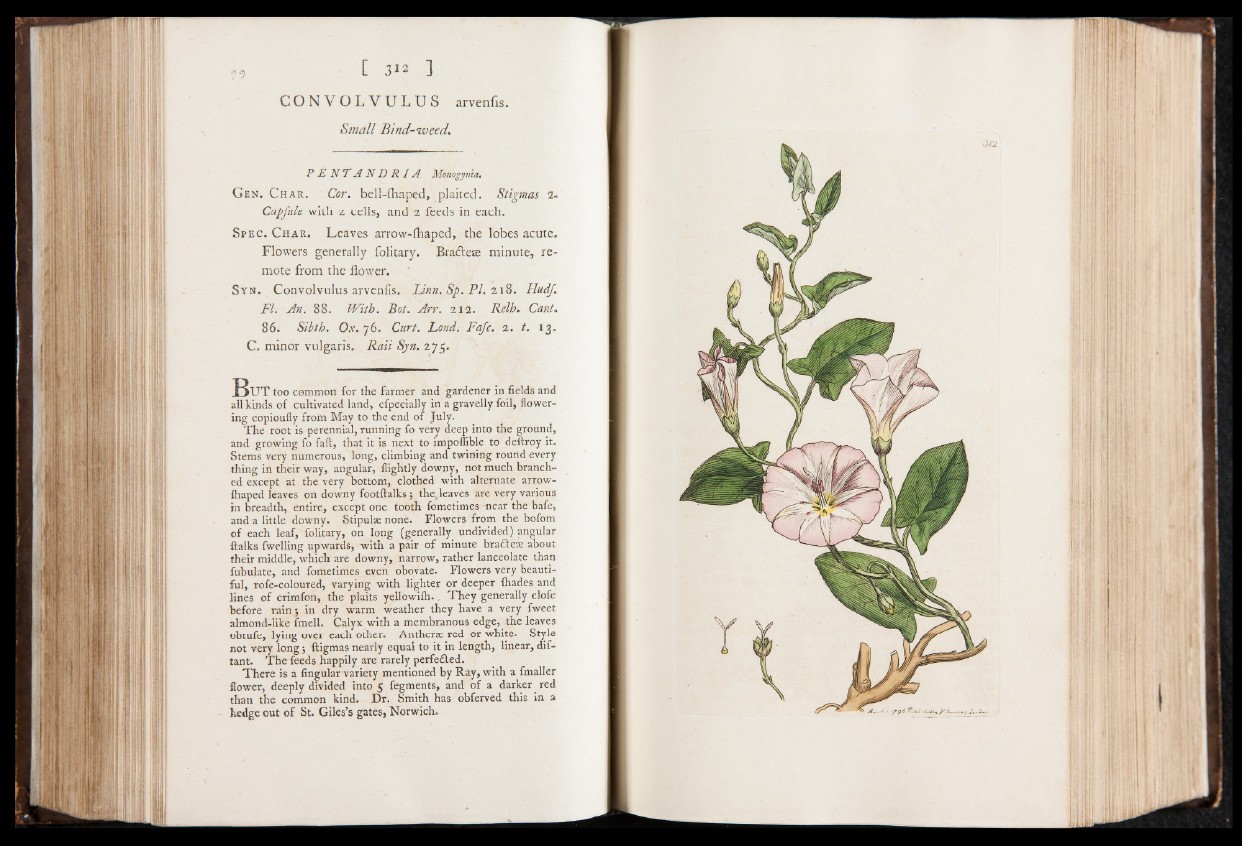
f °) [ 3 12 ]
C O N V O L V U L U S arvenfis.
Small Bind-weed.
P JE N T A N D R I A Motiogynia,
Gen. Char. Cor. bell-fhaped, plaited. Stigmas 1.
Capfule with 2 cells, and 2 feeds in each.
Spec. Char. Leaves arrow-fhaped, the lobes acute.
Flowers generally folitary. Brafteæ minute, remote
from the flower.
Syn. Convolvulus arvenfis. Linn. Sp. P I. 218. Hudf.
FI. An. 88. With. Bot. Arr. 212. Relb. Cant.
86. Sibth. Ox. 76. Curt. Lond. Fajc. 2. t. 13.
C. minor vulgaris. Rati Syn. 275.
B u t too common for the farmer and gardener in fields and
all kinds of cultivated land, efpecially in a gravelly foil, flowering
copioufly from May to the end of July.
The root is perennial, running fo very deep into the ground,
and growing fo fall, that it is next to impoflible to deftroy it.
Stems very numerous, long, climbing and twining round every
thing in their way, angular, flightly downy, not much branched
except at the very bottom, clothed with alternate arrow-
fhaped leaves on downy footftalks ; the.leaves are very various
in breadth, entire, except one tooth fometimes -near the bafe,
and a little downy. Stipulse none. Flowers from the bofom
of each leaf, folitary, on long (generally undivided) angular
{talks fwelling upwards, with a pair of minute bra£tese about
their middle, which are downy, narrow, rather lanceolate than
fubulate, and fometimes even obovate. Flowers very beautiful,
rofe-coloured, varying with lighter or deeper {hades and
lines of crimfon, the plaits yellowilh.. They generally clofe
before rain $ in dry warm weather they have a very fweet
almond-like fmell. Calyx with a membranous edge, the leaves
obtufe, lying over each other. Antherse red or white. Style
not very long; ftigmas nearly equal to it in length, linear, dif-
tant. The feeds happily are rarely perfected.
There is a fingular variety mentioned by Ray, with a fmaller
flower, deeply divided into 5 fegments, and of a darker red
than the common kind. Dr. Smith has obferved this in a
hedge out of St. Giles’s gates, Norwich.
2>IU
JL.rA i <796 /,..)«